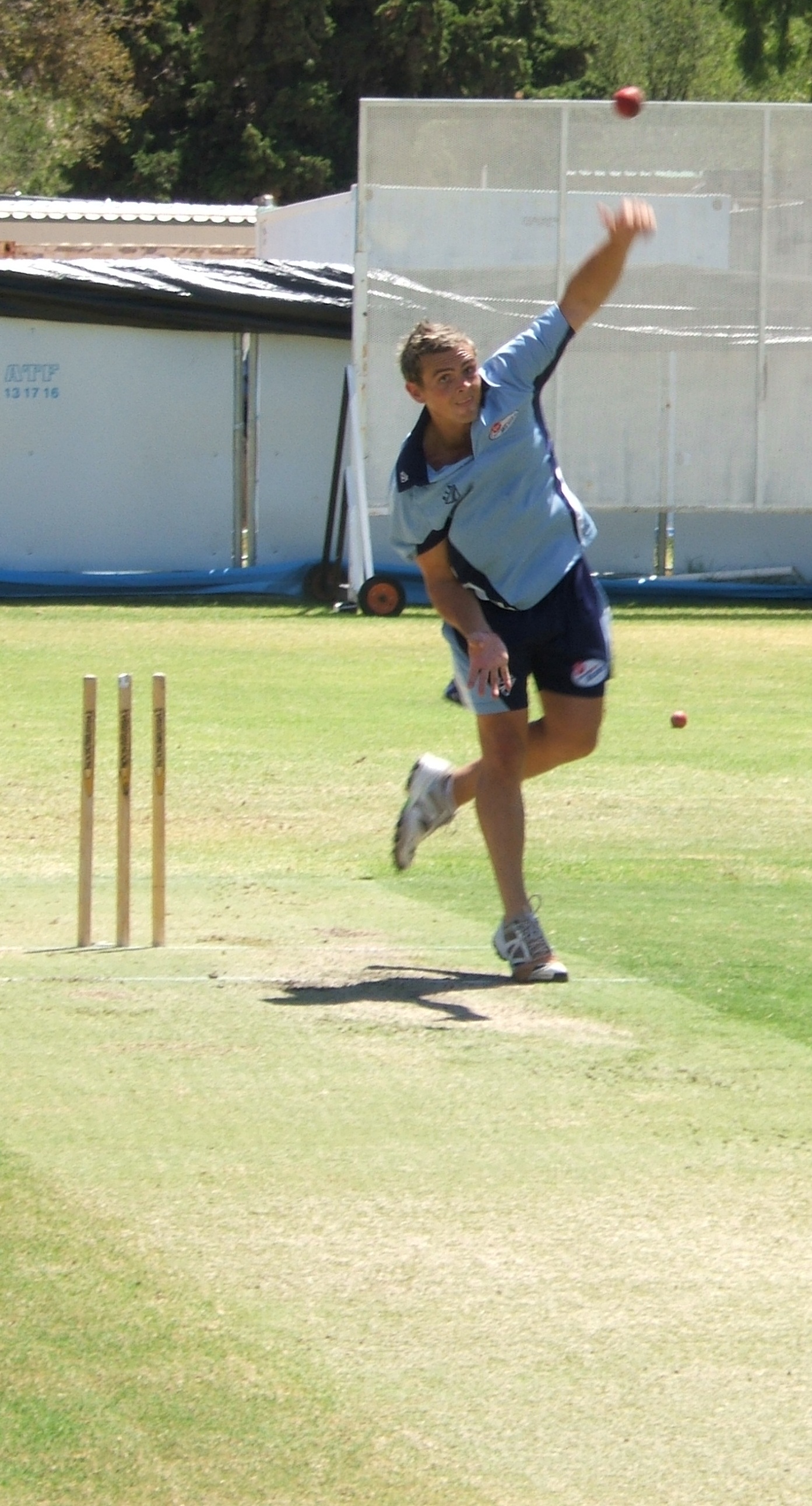 |
| O'Keefe: more than meets the eye |
A while ago, before the Ashes series in England, I wrote a piece (never actually posted) asking who could get in the Australian team ahead of O’Keefe, with various serious options eventually devolving into Clarrie Grimmett’s ghost and various other fatuous suggestions. The point being that O’Keefe had several seasons of being the best spinner in the Sheffield Shield, but fell short of a Test place as Australia tried almost everyone else conceivable.
Maybe he’s just too still. Most of my arguments towards O’Keefe being near the Test team have been down to statistics, but watch him live, and he’s a fairly unfashionable sort of player. He ambles up to the crease, and rolls through it, hurling the ball at the batsman’s pads.
Watch him for a spell though, and those still waters start to deepen. Some balls get tossed up, some get fired in, but he’s relentless and accurate. The position on the crease changes, the pace, line and length all change, over and over again, so the batsman can never get into a rhythm against him. O’Keefe is like Rangana Herath, not much cop on first glance, but relentless and inventive.
If you watch the bowling of a left-arm spinner on the other side, playing for the Alcohol. Think Again Western Warriors (Western Australia to you and me), faster waters run shallower. Ashton Agar has a wonderful action, the sort of action that prompts Australian selectors to give him a Test match debut at 19. But what does that action harvest for him? 55 wickets at 41.03 so far.
When Agar gets into a rhythm, so does the batsman, blocking him away over and over, pausing only to put away the odd bad ball. When O’Keefe does, he dances to his own drumbeat, faster or slower, almost imperceptibly to the batsman; kept constantly alert. Neither players get big turn, but O’Keefe uses what he gets more intelligently.
His continued non-selection for Australia could tell you many things about the mindset of their selectors, if you were that way inclined. You could use it to paint a picture of distrust of statistics, a commitment to instinct, and a love of aesthetic quality. You could make that argument again if you looked at the relative treatment of Shaun Marsh and Phillip Hughes.
But it’s not confined to them. There have always been unfashionable players. In England, the likes of David Masters and Alan Richardson have piled up County Championship wickets, without the sniff of an England place. A lack of pace, actions not pleasing to the eye, and age counting against the tangible achievements.
The charge levelled against these sort of players is that they haven’t got what’s necessary to play at a higher level. That argument seems to suggest that there’s a cookie-cutter set of skills needed for Test cricket, ignoring the wide variety of different players who've made the step up.
O’Keefe’s moment, if it ever came, has probably passed now. When Nathan Lyon made his Test debut, O’Keefe was the obvious choice, but was passed over. He’ll just have to be satisfied with seven T20 internationals for his country, a superficial selection because he looked like a T20 spinner. Those waters ran deeper than the selectors knew; he should have been a Test spinner.
No comments:
Post a Comment